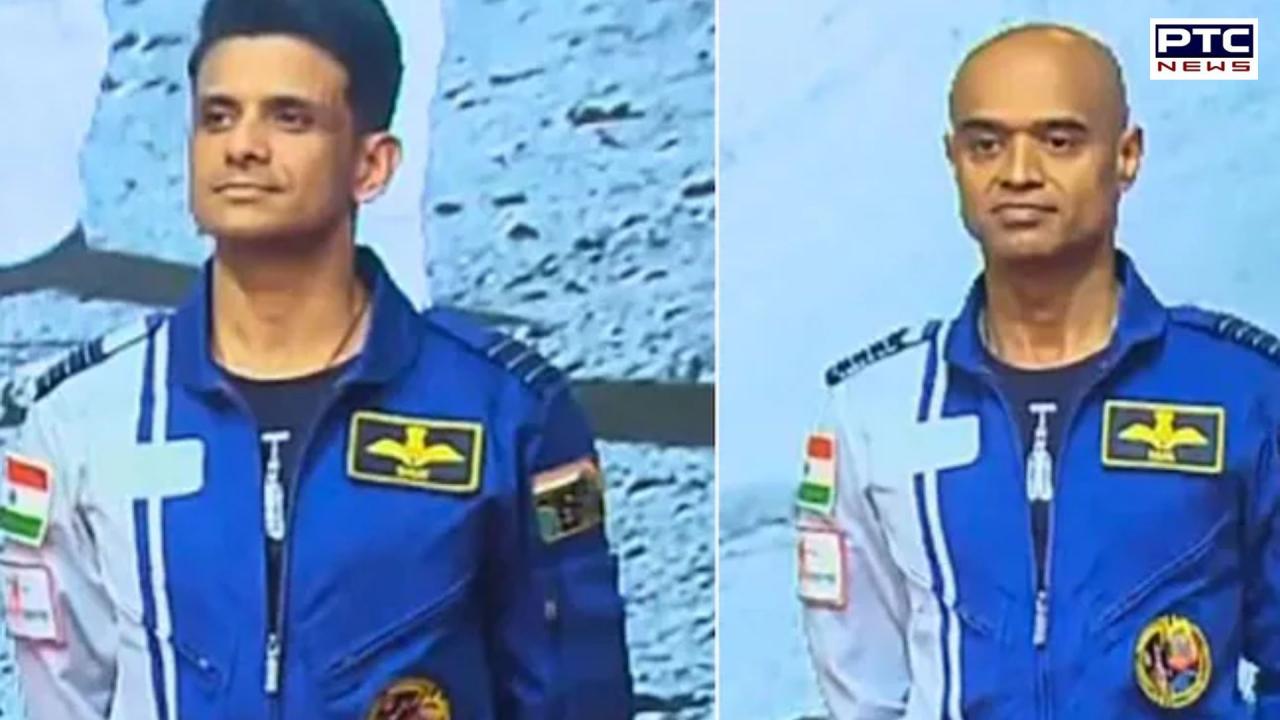- March 31, 2025
- Updated 2:22 am
25 years after Pokhran sanctions, US rolls out the red carpet for ISRO astronauts
PTC News Desk: Two Indian astronauts are scheduled to join the US space agency NASA for the Axiom-4 spaceflight project, which will bring four people to the International Space Station, marking a significant milestone in the research and technology relationship between the two countries.
As part of India’s Gaganyaan Mission, ISRO has dispatched Group Captain Shubhanshu Shukla and Group Captain Prasanth Balakrishnan Nair to the Kennedy Space Center and Axiom Space for training. Group Captain Nair is the project’s backup astronaut, with Group Captain Shukla serving as the principal astronaut for the Axiom mission.
What Is the Mission?
The goal of the Axiom-4 mission is to send four men into orbit using orbit-X’s Falcon-9 rocket and the Crew Dragon space module. If all goes according to plan, the launch is probably going to happen next year. There are four astronauts: an Indian, a Hungarian, a Polish national, and an American.
The Indian astronauts, commonly referred to as Gaganyatris, are highly experienced Air Force pilots. Additionally, they had cosmonaut training in Russia.
NASA Administrator Senator Bill Nelson declared, “We are excited to welcome the first ISRO astronaut to the International Space Station! This is a huge advancement for the space collaboration between the United States and India.”
NASA is making space available to more countries and individuals, according to assistant administrator Ken Bowersox of the agency’s Space Operations Mission Directorate. “We look forward to welcoming the first ISRO astronaut to the International Space Station,” he stated. “The space station continues to serve as humanity’s home in microgravity where we are advancing human spaceflight, enabling science, and improving life on Earth for the benefit of humanity,” he stated.
Big Shift In NASA-ISRO Ties
The US’s relationship with the Indian space agency in the 1990s was drastically different from the current partnership between NASA and ISRO. At that point, the US government took all necessary measures to prevent the transmission of advanced cryogenic technology that would have powered Indian rockets. In the wake of the nuclear testing at Pokhran in 1998, it also placed restrictions on ISRO.
2008 saw the significant thaw in ties thanks to India’s free flight of two NASA instruments aboard Chandrayaan-1. ISRO was still listed as a technology denial by the US at the time.
India did not charge NASA a travel fee for transporting its sensors 384,000 kilometers to the moon’s orbit. Due to this collaboration and India’s generosity, the geological history of the moon was permanently altered when water molecules were found on what was previously thought to be a parched lunar surface. The oldest and largest democracies in the world have been fostering closer connections and aiming higher ever since, and the two nations have not looked back.
The Axiom Role
In a statement, Axiom Space, a for-profit organization serving as a go-between for ISRO and NASA, stated that it has inked a “historic” spaceflight agreement with ISRO, revealing plans to send an Indian astronaut to the International Space Station as part of Axiom Mission 4. It needs to be made clear that the US, not ISRO, should decide whether to use a commercial intermediary.
In 2022, 2023, and 2024, Axiom Space assisted in the flight of three commercial and private missions to the International Space Station. As per the statement, the signing of the Mission 4 agreement “exemplifies a shared commitment to expanding collaboration and capabilities, fueling invention and innovation, and inspiring a new generation of space explorers, and represents a pivotal moment for both the United States and India.”
“India has accomplished a great deal in space,” stated Matt Ondler, president of Axiom Space. “From the successful Chandrayaan missions to the ambitious Gaganyaan project, India has become a beacon of inspiration in the global space community.”
“As space becomes a key arena for commercial and scientific efforts, India, with its rich history in space exploration and clear leadership in technology and entrepreneurship, will be crucial in shaping the domain and advancing humanity’s presence in space,” he stated. He continued, “We look forward to working together with ISRO on this next mission.”
The US and India are now working together in space, which might lead to a partnership on the US’s ambitious Artemis mission, which aims to live on the moon.
Recent Posts
- Crown of goddess Kali, gifted by PM Modi, stolen from temple in Bangladesh
- Hezbollah leader survives assassination attempt amid Israeli strikes that kill 22 in Beirut
- ਕ੍ਰਿਕਟ ਦੇ ਬਦਲੇ ਨਿਯਮ, ਹੁਣ ਇਸ ਕੇਸ ‘ਚ ਦੁਬਾਰਾ ਨਹੀਂ ਮਿਲੇਗੀ ਬੈਟਿੰਗ, ਮੰਨਿਆ ਜਾਵੇਗਾ
- ਸਚਿਨ ਤੇਂਦੁਲਕਰ ਦੇ ਬਰਾਬਰ ਪਹੁੰਚੇ ਜੋ ਰੂਟ, ਪਰ ਵਿਰਾਟ ਦੇ ਇਸ ਰਿਕਾਰਡ ਤੋਂ ਅਜੇ ਵੀ ਦੂਰ
- Ratan tata death: ਸਿਰਫ ਵੋਲਟਾਸ ਹੀ ਨਹੀਂ, ਸਵੇਰ ਤੋਂ ਰਾਤ ਤੱਕ ਤੁਹਾਡਾ ਕੰਮ ਟਾਟਾ ਦੇ ਬਿਨਾਂ ਨਹੀਂ ਚੱਲ ਸਕਦਾ

